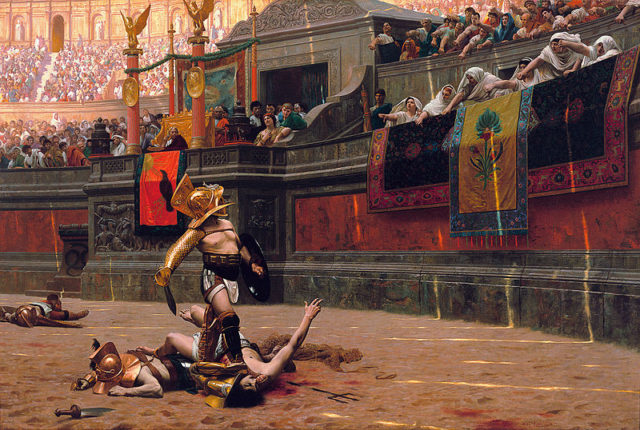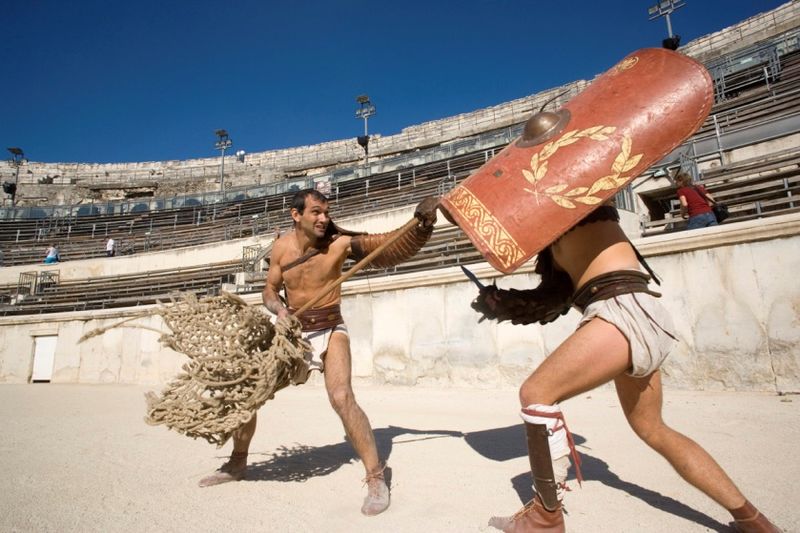Must of us have got his wrong. It is widely believed that the thumbs up gesture originates from the gladiatorial fights of ancient Rome, in which the destiny of a losing gladiator was decided by the crowd. Thumbs up, he lived, thumbs down -he died. If this is what you believe – then you would be wrong, and here’s why.
Thumbs down, signified “swords down,” which meant the losing gladiator was worth more to them alive and was to be spared to fight another day.
The belief that the ‘thumbs-up’ and ‘thumbs-down’ gestures gave approval or disapproval respectively entered the public consciousness with Jean-Léon Gérôme’s 1872 painting ‘Pollice Verso’. The ‘thumbs down’ gestures of the crowd in Gérôme’s popular picture were interpreted by the 19th century public as signs of disapproval. Actually, the artist probably never intended that, as ‘pollice verso’ just means turned thumb.

Sadly his art work became so popular that Gérôme’s mistake became the accepted definition. What is even more sad is that Hollywood has its part to play too. Since Ridley Scott made Gladiator, it has totally transformed tourism in Rome. The Colosseum is now the city’s largest attraction. There are men dressed as gladiators offering to pose for pictures with you. HOWEVER, the painting had a strong influence on the film Gladiator. The producers showed director Ridley Scott a reproduction of the painting before he read the script; “That image spoke to me of the Roman Empire in all its glory and wickedness. I knew right then and there I was hooked”, commented Scott
Scholars before Gérôme gave support to the view that “thumbs down” among the Romans, meant the hapless gladiator was to be spared, not killed.
The gesture meant “Throw your sword down”. A 1601 translation of Pliny equates the gesture with “assent” or “favor”, and John Dryden’s 1693 version of Juvenal’s Satires gives the thumb being bent back,not down, as the death signal.
Whenever a combatant was seriously wounded, the presiding judge, or referee, was called upon to determine whether the man should live or die, depending on how well he had put up a fight.
Bit like modern day ‘talent shows’ a judge usually based his decision on the passions expressed by the crowds in the stadium; whether they would cheer, applaud, and give the thumbs down if they liked the man,. If they didn’t then they would give the thumbs up and his opponent would dispatch the fatal blow. Some scholars suggest the thumbs up meant to thrust a sword up into the heart.
